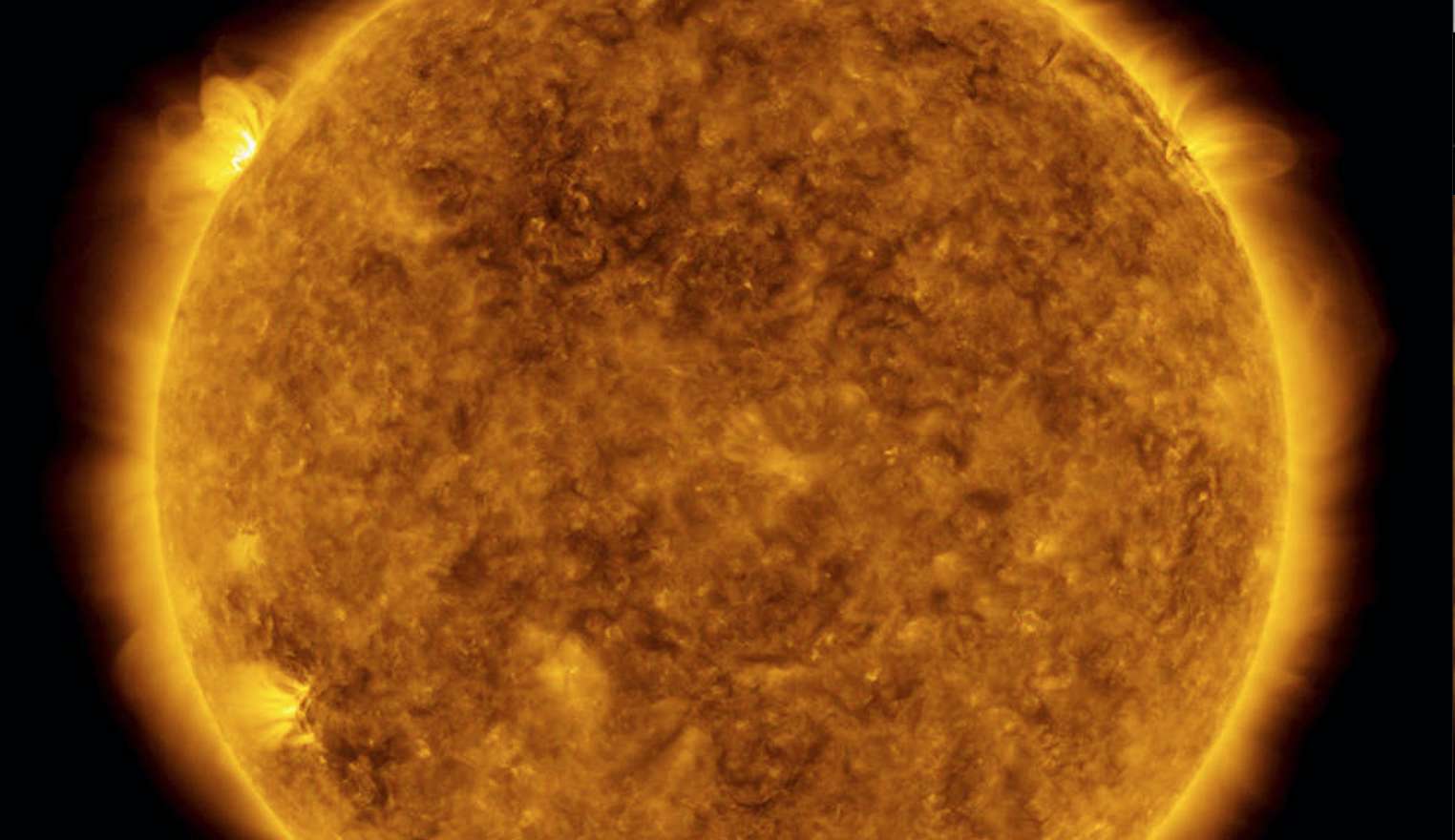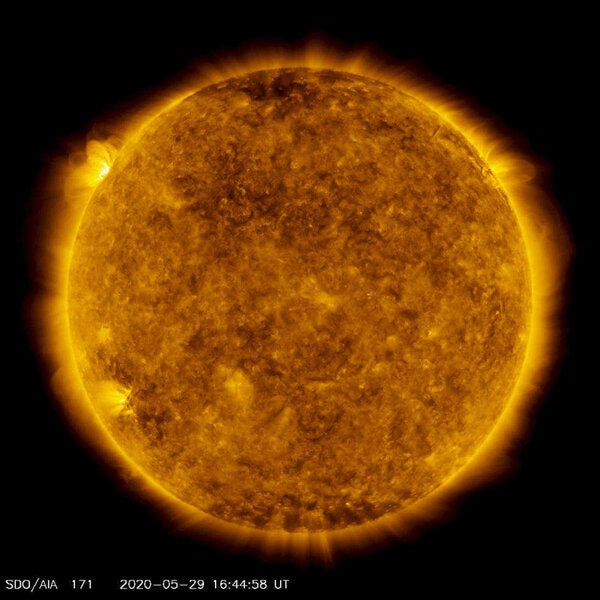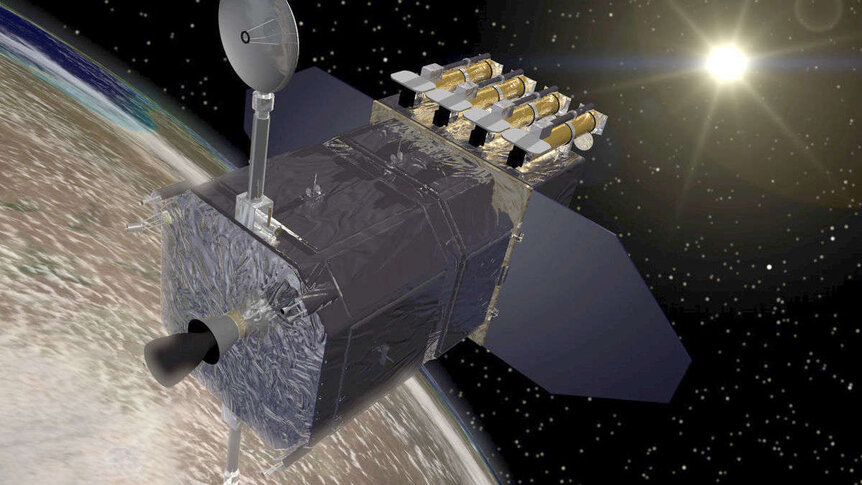Create a free profile to get unlimited access to exclusive videos, sweepstakes, and more!
Our sun just produced its biggest solar flare in years, and NASA got it on camera

Potentially awakening from its cyclical 11-year slumber, a colossal solar flare just erupted from our Sun and was captured in all its cosmic brilliance by NASA's Solar Dynamics Observatory on May 29.
This was the first M-class flare observed since back in October 2017, and scientists believe this could be the harbinger of a new period of increased activity and sunspots signaling the last gasps of Solar Cycle 24 and the start of Solar Cycle 25, although only time will tell.
Depicted below in its traditional gold-toned, 171-angstrom wavelength, check out the glaring bubble projecting from the upper left half of the sun's photosphere. A sunspot is a cooler, and much darker, region of the Sun's photosphere caused by a solar magnetic disturbance. Solar flares are violent bursts of energy resulting from the intertwining, criss-crossing, or reorganizing of magnetic field lines in close proximity to sunspots.
Typically, solar activity rises and falls during the sun's normal 11-year cycle, and with these predictable interludes, sunspot migration follows the same pattern. NASA and the National Oceanic and Atmospheric Administration (NOAA) monitor sunspots to calculate, theorize, and ultimately attempt to predict the encroachment of the next solar cycle.
Right now, scientists are keeping a close eye on any increased number of sunspot clusters, as it's key to determining the approximate dates of solar minimum, which is the official start of Solar Cycle 25. Fresh sunspot activity could be an indicator that the Sun is coming out of a passive state and building momentum as it enters a new phase of agitated existence.
Because it takes a minimum of six months of solar observations and careful sunspot-counting in the aftermath of a designated minimum, there's an unpredictability factor involved where the Sun could reverse its course and revert back to its old, slower cycle of activity. Scientists must witness the numbers consistently rising before they can declare when the bottom occurs, and it's often determined after the fact only looking backward and forward in time to make that assessment.
Astronomers classify significant solar flares into three categories of C, M, and X, with each subsequent class rated 10 times more powerful than the previous class. Dangerous radiation from billowing flares are unable to penetrate Earth's atmosphere to cause destruction but, if they're strong enough, can disrupt our ionosphere where GPS and telecommunications signals navigate.
This M-Class flare, though the largest in three years, was below the threshold that could interfere with geomagnetic space and create an official alert.
NASA's Solar Dynamics Observatory launched back in February of 2010 and celebrates its 10th anniversary in space this year. During the past decade the intrepid spacecraft has maintained a vigilant watch over the Sun, investigating how our nearest star creates intense solar activity and acts as the burning engine for a variety of space weather that affects the entire solar system.
During its ongoing mission, SDO has gathered millions of scientific solar images that provide researchers with fresh insights into its complex workings.
This priceless data and careful measurements of the Sun, including its churning atmosphere, magnetic fields, solar winds, and total energy output, have exponentially increased mankind's knowledge of our warming yellow star.




























